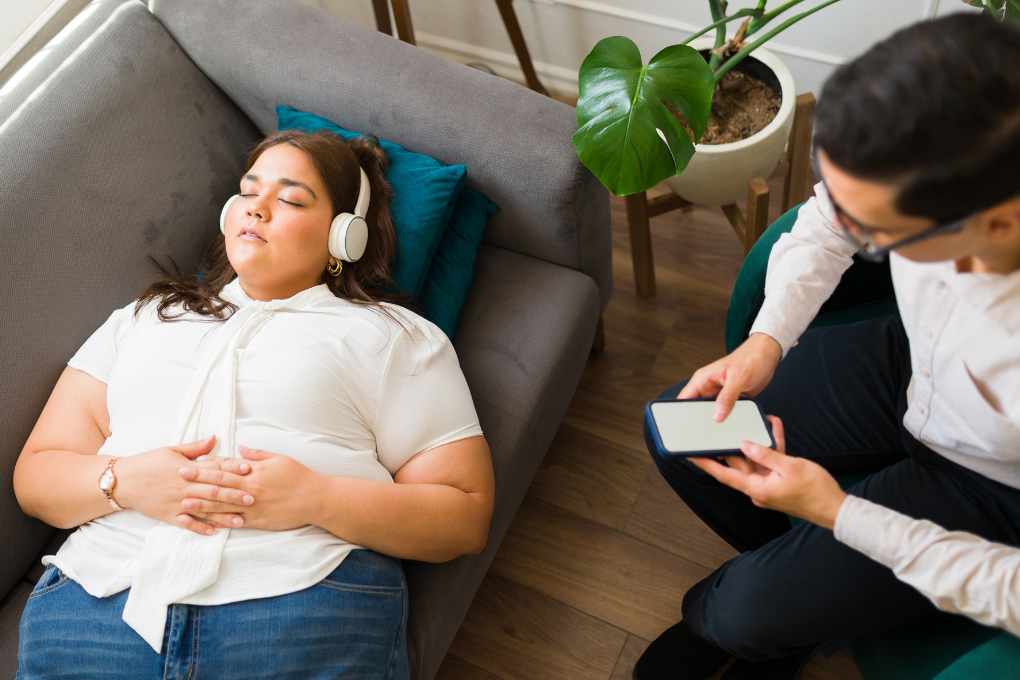Music has long been part of human culture, from ancient rituals to modern therapy sessions and beyond. Music’s effect on our wellbeing is immense. Formally emerging as an approach in the mid-20th century, music therapy harnesses sound therapy’s therapeutic powers for healing and emotional growth in healthcare settings, particularly among hospitalized patients. Today, its benefits are increasingly recognized.
Imagine being in an intimidating clinical setting–an intimidating place filled with beeping machines and sterile walls–when soothing melodies suddenly fill that space, creating an oasis of comfort amid chaos. That is where music therapy comes in—providing not just comfort but tangible physical benefits that can transform recovery experiences.
As we explore further into this intriguing field, we’ll investigate how music therapy works and reveal its many physical advantages for those experiencing hospitalization. Discover why harmonious sounds are quickly becoming essential tools in patient care!
How Does Music Therapy Work?
Music therapy works on the principle that music can alter both emotions and physical sensations, drawing upon sound’s profound connection with human experience to promote healing.
Therapists tailor sessions to the unique needs of each patient. They may use live or recorded music, encouraging active listening or engaging patients in creative expression activities. This tailored approach fosters emotional release and exploration.

Melodies and rhythms stimulate certain areas of the brain, stimulating its release of neurotransmitters such as dopamine. These neurotransmitters play a critical role in controlling mood, pain perception, and overall well-being.
Additionally, rhythmic patterns can help your body relax by synching with its functions, providing a means to combat anxiety. When patients interact with music, they often find themselves focused less on discomforts while feeling an uplifted change of spirit.
Music therapy provides a safe space for self-expression, helping individuals navigate complex emotions during difficult times.
Physical Benefits of Music Therapy for Hospitalized Patients
Music therapy provides hospitalized patients with numerous physical benefits that can greatly accelerate the healing process, with one notable advantage being pain management. Patients typically report less discomfort after engaging with music and reduced reliance on pain medication.
Stress relief is another key benefit. Music acts as a soothing balm to reduce cortisol levels and provide an escape from hospital surroundings – this relaxation not only enhances comfort but also assists recovery.
A. Improved Sleep
Improved sleep quality stands out as another standout quality. While hospitalized, many individuals struggle to get restful slumber due to anxiety or noise pollution; adding soothing music into their routine may help ease them into deeper slumber.
Music therapy has an incredible capacity to elevate mood effectively. It generates positive emotions that create an upbeat environment conducive to healing and resilience during difficult times.

B. Pain Management
Pain Management Hospitalized patients often struggle with managing pain. Music therapy provides an alternative way of alleviating discomfort without solely relying on medication.
Studies demonstrate how listening to music can trigger the release of endorphins—natural painkillers in your body’s biochemistry that help decrease feelings of discomfort and promote relaxation. This biochemical response provides relief while simultaneously encouraging you to relax more fully.
Engaging with music–be it by playing an instrument or singing–can also provide a welcome distraction from physical ailments. Patients often find themselves immersed in melodies and rhythms that take their minds off what’s bothering them physically.
Music’s rhythmic patterns produce soothing vibrations that can ease tension in muscles and joints, providing both emotional and physical comfort during recovery periods.
Individualized playlists tailored specifically to individual preferences can increase this effect and make each session more impactful for those experiencing pain.
C. Music Therapy as Stress Reducer
Hospitalized patients frequently experience stress. An unfamiliar environment, medical procedures, and uncertainty can heighten anxiety levels significantly; here is where music therapy truly shines!
Listening to soothing music has been proven to lower cortisol levels in the body, leading to decreased stress and an enhanced feeling of peace and tranquility. Patients frequently report feeling more relaxed after attending music therapy sessions.
Personalized playlists can help evoke positive memories and instill comforting emotions that help divert attention away from discomfort and fear associated with hospitalization.

Therapists may assist their patients in engaging in active music-making activities like drumming or singing, which not only serves as a form of distraction but allows for emotional expression that ultimately boosts overall well-being.
Gentle melodies provide a respite from treatment’s chaos, providing mental comfort during times of strife.
Music therapy offers hospitalized patients an effective means of improving sleep through relaxing sounds that create an atmosphere conducive to relaxation, relaxing the mind and body simultaneously.
Research suggests that specific forms of music can significantly lower heart rates and blood pressure, helping patients relax more easily before drifting off into restful slumber. This soothing music also encourages healing for any patients suffering from anxiety or insomnia.
D. Enhanced Mood
Music therapy can also provide a welcome respite from pain or anxiety, helping patients to focus their minds instead on melodies rather than worries during bedtime and easily fall and stay asleep through the night.
Integrating live or recorded music into nighttime routines of hospital stays transforms hospital stays into more peaceful experiences, leaving many individuals feeling revitalized when waking up, ready to face their recovery journey with renewed strength.
Music can have a dramatic effect on people’s emotions; for hospitalized patients, this effect could prove life-changing.
Engaging in music therapy often results in an enriching experience. The rhythms and melodies create an opportunity to regain joy that may have been lost during illness.
Patients often report feeling more connected to their emotions through music listening or participating in musical activities, which promotes self-expression, which is critical for maintaining mental wellbeing.
Music also stimulates the release of neurotransmitters such as dopamine–known as the “feel-good” hormone–thus contributing to an overall sense of well-being.
The addition of their preferred songs or genres can give patients an increased sense of control over their environment, helping them reclaim some happiness in spite of difficult circumstances.
Improved mood can lead to better compliance with treatment plans and foster more social interactions between staff and patients.
Implementing Music Therapy into Hospitals
Implementing music therapy into hospitals can be transformative for both patients and staff, creating an unforgettable experience for all involved. To effectively incorporate this practice, healthcare facilities should consider hiring certified music therapists trained to customize sessions based on each patient’s individual needs.

Establishing designated areas where music therapy can take place is crucial for its success. These should be inviting spaces, allowing patients to feel relaxed while taking in therapeutic sounds.
Training existing staff about the benefits of music therapy fosters collaboration within healthcare teams. Nurses, physicians, and caregivers will appreciate how incorporating music into care plans can lead to improved patient outcomes.
Sharing success stories from previous implementations helps raise awareness among stakeholders and highlight real-life examples to demonstrate the significant physical benefits music therapy can bring in terms of improving patient recovery experiences.
Make room for this innovative approach in hospitals to revitalize healing environments across various settings. By harnessing sound and rhythm as tools towards holistic well-being for hospitalized patients everywhere.






